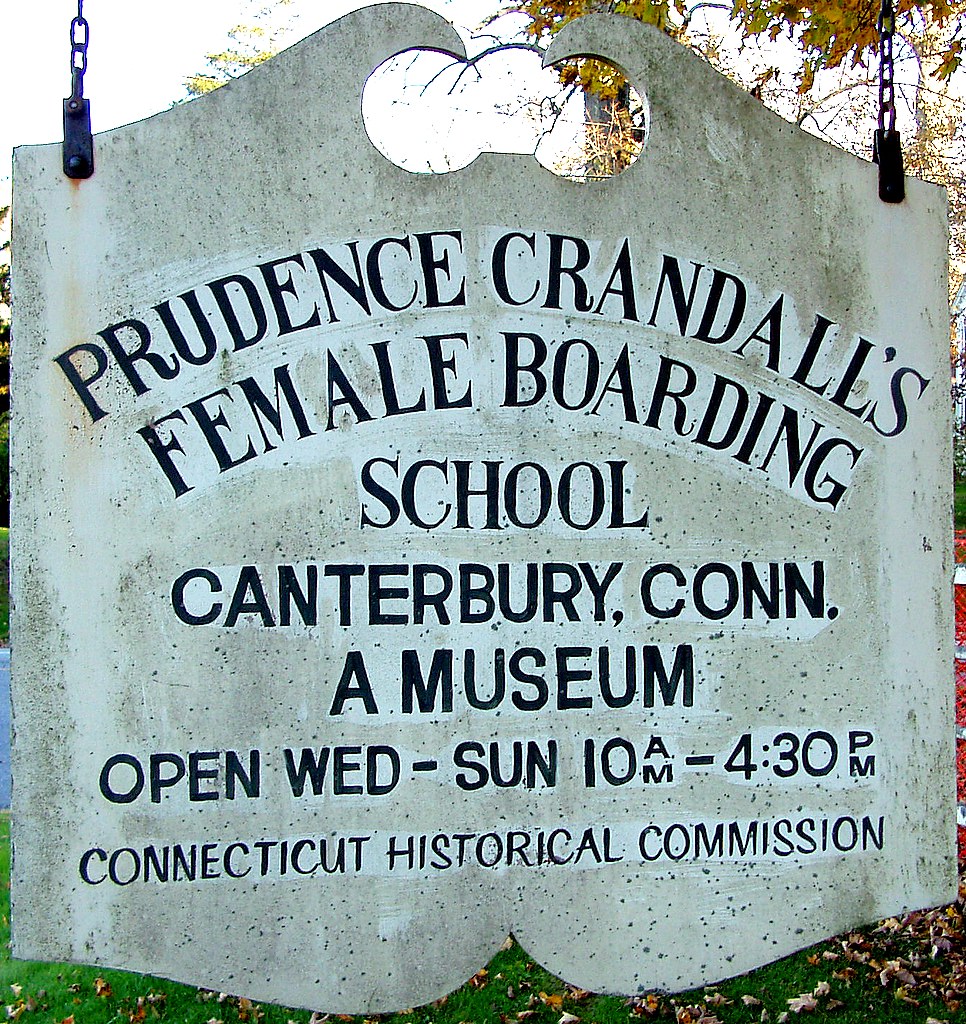Prudence Crandall Museum

Prudence Crandall, a Quaker abolitionist and educator, courageously challenged racial discrimination by establishing one of Connecticut’s first schools for African American girls in 1833. Supported by prominent anti-slavery advocates, including William Lloyd Garrison, Crandall—a white woman—faced significant legal and social backlash for her efforts to educate free Black individuals in the North.
Initially teaching in Plainfield, Crandall opened a private girls’ academy in Canterbury in 1831, attracting daughters from the town’s affluent families. The school, regarded as one of the best in the state, offered a curriculum that rivaled those of esteemed boys’ schools.
In 1832, Crandall admitted Sarah Harris, an African American woman aspiring to become a teacher. The admission of Harris incited outrage among local white parents, who demanded Harris’s expulsion. Crandall refused, leading to the withdrawal of white students. Undeterred, she transformed her academy into a boarding school for African American girls, which provoked further hostility from local white men who feared an influx of African Americans and potential interracial marriages. Garrison, editor of the leading antislavery newspaper, the Liberator, supported Crandall by promoting the school and connecting her with African American families eager to enroll their daughters.

Students traveled from several states to attend Crandall’s school. In response, Connecticut enacted the “Black Law,” restricting out-of-state Black and Brown individuals from attending schools in Connecticut towns without local approval. Crandall was arrested, spent a night in jail, and endured three court trials before her case was dismissed. The school was ultimately forced to close in September 1834 following a violent mob attack. These events garnered national and international attention in the 1830s, energizing the growing abolitionist movement. Many of Crandall’s students, such as Julia Williams, Mary Miles, and Mary Harris, later became educators, reformers, and community leaders. The Crandall v. Connecticut case influenced two landmark U.S. Supreme Court decisions—Dred Scott v. Sandford and Brown v. Board of Education—and helped lay the groundwork for the 14th Amendment to the U.S. Constitution.
The Prudence Crandall Museum does not resemble a typical historic house museum. There are very few primary sources left by teachers, students, and supporters detailing how rooms were used during the operation of the Canterbury Female Boarding School, and only a few artifacts associated with the school have survived.
The Prudence Crandall Museum is an International Site of Conscience, a National Historic Landmark, and an Archaeological Preserve located in Canterbury, CT. Prudence Crandall is Connecticut’s Official State Heroine.
This site is open to the public.
References
Michals, Debra. “Prudence Crandall.” National Women’s History Museum. National Women’s History Museum, 2015. Link.
